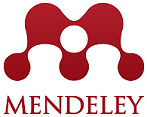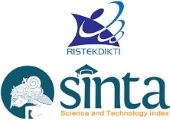Mapping the Structure of Tourist Space in the North Bandung Conservation Area
Abstract
ABSTRACT
Sustainable land management is a concept that is integrated between various aspects. This research uses a quantitative approach with the aim of mapping the tourism spatial structure in the North Bantung Conservation Area (KBU). It is recorded in West Java Provincial Government data (2021) that 20.4% of (TAOs) in West Java is in the North Bandung area. So this has great potential in terms of the number of tourist visits. Apart from that, the geographical position of the North Bandung area which is close to other metropolitan cities means that (TAOs) in this area increasingly has large tourist market potential. As a result, the development of tourism and its supporting facilities will also accelerate. This condition will certainly encourage land conversion activities. The occurrence of land conversion in KBU requires control in the implementation stage of space use patterns. The results of the analysis show that creating appropriate zoning in the tourist space structure is an important step in maintaining the authenticity of nature and culture in the North Bandung area. The use of tourist areas in this zone places more emphasis on the ecotourism aspect, with development potential covering an area of 16331.20 hectares located in zone I A (prohibited zone). The next development direction is level I and II buffer zones. The buffer zone is a zone that can be used for the construction of secondary or conditional facilities.
ABSTRAK
Pengelolaan lahan berkelanjutan merupakan sebuah konsep yang terintegrasi antara berbagai aspek. Penelitian ini menggunakan pendekatan kuantitatif dengan tujuan untuk memetakan struktur ruang wisata di Kawasan Konservasi Bantung Utara (KBU). Tercatat dalam data Pemerintah Provinsi Jawa Barat (2021) sebesar sebesar 20,4% ODTW di Jawa Barat terdapat di Kawasan Bandung Utara. Sehingga hal tersebut menjadi potensi yang besar dalam hal jumlah kunjungan wisatawan. Disamping itu posisi geografis Kawasan Bandung Utara yang memiliki jarak yang dekat dengan kota metropolitan lainnya menjadikan ODTW di kawasan ini semakin memiliki potensi pasar wisatawan yang besar. Hasilnya perkembangan pariwisata dan fasilitas pendukungnya juga akan semakin pesat. Kondisi ini tentu akan mendorong kegiatan alih fungsi lahan. Terjadinya alih fungsi lahan di KBU memerlukan pengendalian dalam tahap pelaksanaan pola pemanfaatan ruang. Hasil analisis menunjukkan bahwa pembuatan zonasi yang tepat dalam struktur ruang wisata merupakan langkah penting dalam menjaga keaslian alam dan budaya di kawasan Bandung Utara. Pemanfaatan kawasan wisata di zona ini lebih menekankan kepada aspek ekowisata, dengan potensi pengembangan seluas 16331,20 Ha yang berada pada zona I A (zona terlarang). Arahan pengembangan selanjutnya ialah zona penyangga tingkat I dan II. Zona penyangga merupakan zona yang dapat dimanfaatkan untuk pembangunan fasilitas sekunder ataupun kondisional.
Keywords
Full Text:
PDFReferences
Andriotis, K., Usun, Ç. F., & Dinç, Y. (2024). Determining the model of tourism business district (tbd) in coastal resorts: A case study of Turkey. Geographical Review, 114(1), 31–50.
Azizbek, K., Tursunalievich, A. Z., Gayrat, I., Bulturbayevich, M., & Azamkhon, N. (2020). Use of gravity models in the development of recreation and balneology. PalArch's Journal of Archaeology of Egypt/Egyptology, 17(6), 13908-13920.
Bramwell, B., Higham, J., Lane, B., & Miller, G. (2017). Twenty-five years of sustainable tourism and the Journal of Sustainable Tourism: looking back and moving forward. Journal of Sustainable Tourism, 25(1), 1–9.
Dolnicar, S. (2020). Designing for more environmentally friendly tourism. Annals of Tourism Research, 84, 102933.
Gelbman, A. (2022). Seaside hotel location and environmental impact: Land use dilemmas. Journal of Tourism and Cultural Change, 20(4), 530–550.
Getz, D. (1993). Planning for tourism business districts. Annals of Tourism Research, 20(3), 583–600.
Jóźwiak, M., & Sieg, P. (2021). Tourism development in post-industrial facilities as a regional business model. Sustainability (Switzerland), 13(4), 1–16.
Khairi, M., & Darmawan, D. (2021). The relationship between destination attractiveness, location, tourism facilities, and revisit intentions. Journal of Marketing and Business Research, 1(1), 39–50.
Koens, K., Postma, A., & Papp, B. (2018). Is overtourism overused? Understanding the impact of tourism in a city context. Sustainability (Switzerland), 10(12), 1–15.
Mishra, H. G., Pandita, S., Bhat, A. A., Mishra, R. K., & Sharma, S. (2022). Tourism and carbon emissions: A bibliometric review of the last three decades: 1990–2021. Tourism Review, 77(2), 636–658.
Mubarokah, A., & Hendrakusumah, E. (2022). Pengaruh alih fungsi lahan perkebunan terhadap ekosistem lingkungan. Jurnal Riset Perencanaan Wilayah dan Kota, 2(1), 1–14.
Prayag, G. (2020). Time for reset? Covid-19 and tourism resilience. Tourism Review International, 24(2–3), 179–184.
Rahmafitria, F., Pearce, P. L., Oktadiana, H., & Putro, H. P. H. (2020). Tourism planning and planning theory: Historical roots and contemporary alignment. Tourism Management Perspectives, 35(229), 1–10.
Ramkissoon, H. (2023). Perceived social impacts of tourism and quality-of-life: A new conceptual model. Journal of Sustainable Tourism, 31(2), 442–459.
Ruhanen, L., Moyle, C. lee, & Moyle, B. (2019). New directions in sustainable tourism research. Tourism Review, 74(2), 245–256.
Samodro, P., Rahmatunnisa, M., & Endyana, C. (2020). Kajian daya dukung lingkungan dalam pemanfaatan ruang di kawasan Bandung Utara. Jurnal Wilayah dan Lingkungan, 8(3), 214–229.
Shi, S., & Yin, J. (2021). Global research on carbon footprint: A scientometric review. Environmental Impact Assessment Review, 89, 106571.
Subakti, A. G., Bahri, A. S., & Anita, T. L. (2020). A strategy in developing Pasar Bunga Rawa Belong as a tourist destination in West Jakarta. Journal of Indonesian Tourism, Hospitality and Recreation, 3(2), 153-159.
Wijayakusuma, B. (2023). Faktor yang mempengaruhi alih fungsi lahan daerah resapan air Kecamatan Cimenyan. Jurnal Riset Perencanaan Wilayah dan Kota, 3(1), 29–38.
Winarso, H., Oetomo, A., & Priyani, R. (2003). Pendekatan tourism business district dan partisipatif dalam Pengembangan jalur wisata perkotaan (kasus jalur wisata Kota Jakarta. In Jurnal Perencanaan Wilayah dan Kota, 14(2), 11–38.
Yasmira, A. (2014). Analisis morfologi ruang Kota Bandung. Jurnal Arsitekno, 3(3), 11–18.
Yusyaf, D. J., Wilis, R., & Padang, U. N. (2024). Kajian alih fungsi lahan pertanian menjadi sektor pariwisata di Nagari Tarantang Kecamatan Harau Kabupaten Lima Puluh Kota. Jurnal Inovasi dan Pengabdian kepada Masyarakat. 3(1), 532–539.
DOI: https://doi.org/10.17509/jithor.v6i2.69483
Refbacks
- There are currently no refbacks.

This work is licensed under a Creative Commons Attribution-ShareAlike 4.0 International License.
eISSN : 2654-4687
pISSN : 2654-3893
This work is licensed under Creative Commons Attribution-ShareAlike 4.0 International License















